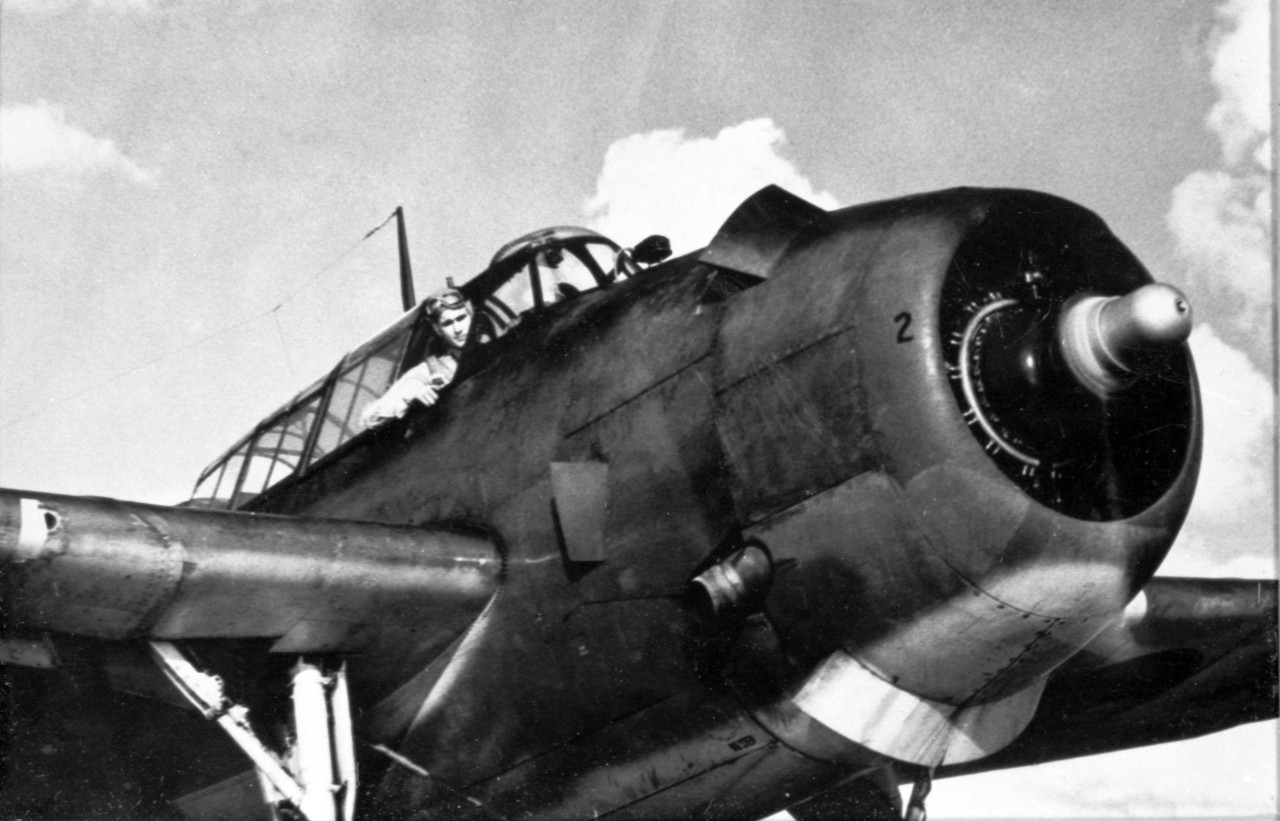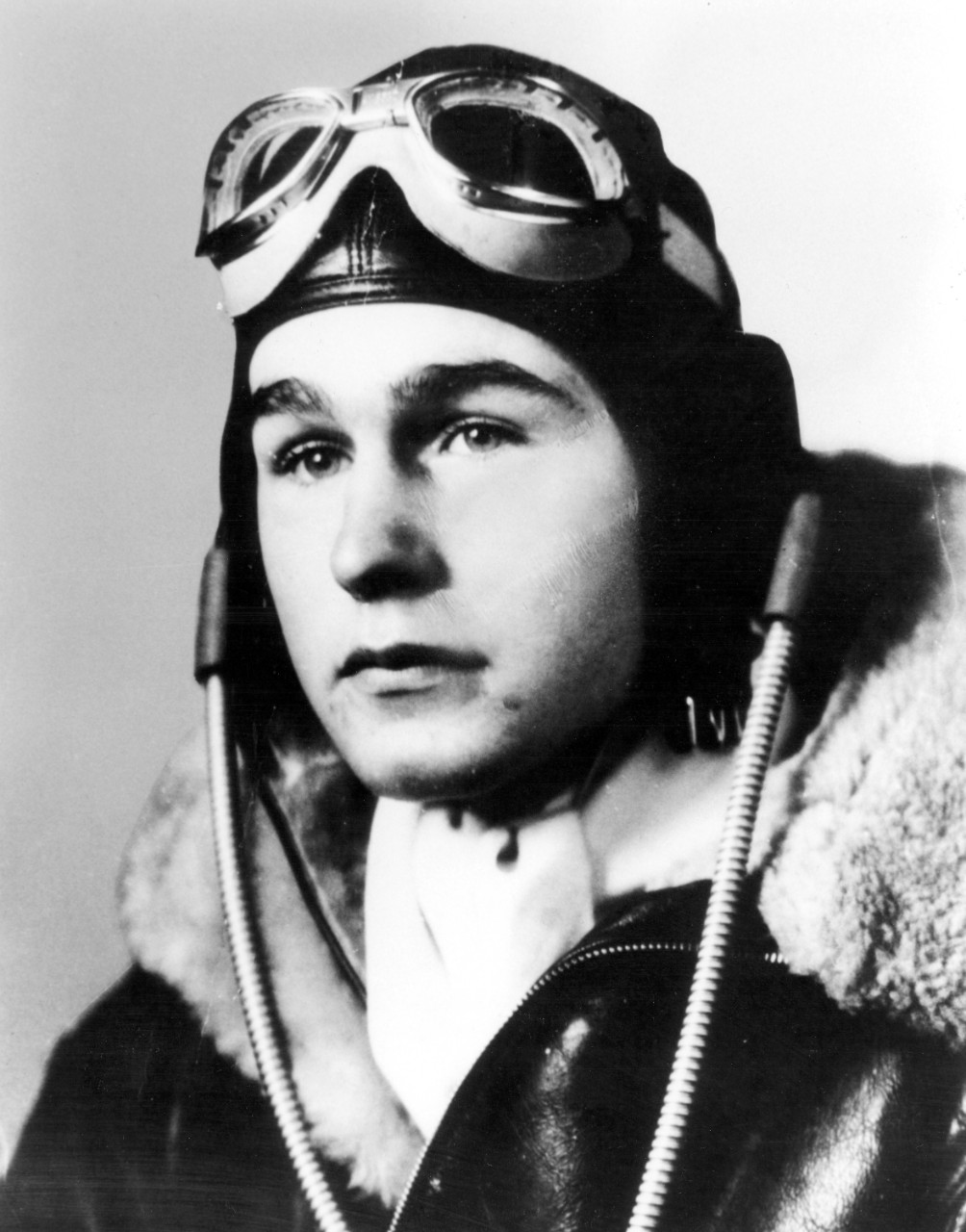On September 2, 1944, during one of the most ferocious battles of World War II in the Pacific Ocean, a young US pilot found himself in a critical predicament. Struggling against the odds, the pilot bailed out of his burning Grumman TBM Avenger after his aircraft was hit by flak while attacking Japanese installations.
Despite the dangerous circumstances, he was miraculously rescued by a US submarine crew. This pilot was Lieutenant Junior Grade (LTJG) George H. W. Bush, who would later become the 41st President of the United States.
The US Naval Institute commemorated this key event on its X account, recounting the rescue of LTJG George Herbert Walker Bush by the crew of the USS Finback (SS-230).
At the age of 18, George H. W. Bush chose to enlist in the Navy with the aspiration of becoming a Naval Aviator, a decision influenced by the attack on Pearl Harbor during his time as a student at Phillips Academy in Andover, Massachusetts.
A Russian Jet That Shocked The West! The Incredible Story Of MiG-15 That Decimated USAF Bomber Fleet
Shortly after graduating, on his 18th birthday, he enlisted and started preflight training at the University of North Carolina at Chapel Hill.
#OTD 1944, the crew of USS Finback (SS-230) rescued a young lanky pilot who had bailed out of his flaming Grumman TBM Avenger after the plane was hit by flak while attacking Japanese installations. LTJG George H. W. Bush would go on to be the 41st president of the United States. pic.twitter.com/QRVx70kNmT
— U.S. Naval Institute (@NavalInstitute) September 3, 2024
Upon completing the 10-month course, he was commissioned as an ensign in the US Naval Reserve on June 9, 1943, just before his 19th birthday, making him one of the youngest naval aviators at the time.
Bush’s service records indicated he was an “average” pilot, with one instructor describing him as “somewhat eccentric.”
A Russian Jet That Shocked The West! The Incredible Story Of MiG-15 That Decimated USAF Bomber Fleet
After completing his flight training, George H. W. Bush was assigned as a photographic officer to Torpedo Squadron (VT-51) in September 1943. His squadron was integrated into Air Group 51 and was stationed aboard the USS San Jacinto in the spring of 1944.
The USS San Jacinto, as part of Task Force 58, played a crucial role in several major operations. In May 1944, the task force conducted operations against the Marcus and Wake Islands, and in June, it was involved in the Marianas campaign.
On June 19 of that year, Task Force 58 secured a notable victory in one of the largest and most decisive air battles of the war. However, during one of his missions, Ensign Bush’s aircraft was compelled to make a water landing after encountering difficulties.
Although he was successfully rescued by the destroyer USS Clarence K. Bronson, the aircraft was lost. However, on July 25, Ensign Bush, along with another pilot, was credited with sinking a small cargo ship, contributing to the naval efforts.
That incident marked Bush’s second crash; he had previously crash-landed during a practice bombing run in Virginia. Although the plane was destroyed, Bush survived the accident without sustaining any injuries.
George H.W. Bush’s Narrow Escape
After Bush was promoted to Lieutenant Junior Grade on August 1, the USS San Jacinto began operations against Japanese forces in the Bonin Islands. Like many wartime pilots, Bush named his aircraft after a girl back home, calling it “Barbara III” after losing his first two planes.
Flying in World War II was perilous; according to retired Admiral Samuel Cox, director of the Naval History and Heritage Command, half of the 16 pilots in Bush’s squadron were killed or captured by the end of the war.
On September 2, 1944, 20-year-old Lieutenant Junior Grade George H. W. Bush was on his 50th mission, bombing a radio tower on Chichi Jima.
The USS San Jacinto launched four Grumman TBF Avenger bombers that morning, including Bush’s, which had two crew members: regular radioman Petty Officer 2nd Class John Delaney and substitute gunner LTJG William “Ted” White. Bush’s usual gunner, Leo W. Nadeau, was replaced by White, who wanted to observe the island.
Nadeau recounted to CNN in 2003 how he was told to stand down and watched as the plane took off, never to return.
When they reached Chichi Jima, the anti-aircraft fire was fierce, and Bush’s plane was hit. Despite this, Bush completed his bombing run and instructed his crew to bail out as smoke filled the cockpit and flames engulfed the wings. Bush himself parachuted out at the last possible moment.

According to retired Admiral Samuel Cox, two parachutes deployed from the aircraft: one opened successfully, likely belonging to LTJG Bush, while the other, known as a “streamer,” failed to open.
While adrift in a life raft for several hours, with American fighter planes flying overhead, Bush anxiously searched for his missing crew members, who had perished in the crash.
He later reflected on the profound sorrow he experienced, weeping and swimming frantically as he awaited rescue, particularly upon the grim realization that his fellow crew members had not been located.
“Bush was actually surprised when, out of nowhere, this submarine surfaces right next to him,” Cox said.
Bush was eventually picked up by the USS Finback, a submarine patrolling the area. Bush spent 30 days on the submarine thinking, “Why had I been spared, and what did God have in store for me?”
The unfortunate destiny of eight additional airmen who were downed over Chichi Jima remained a mystery for many decades.
These men were captured by the Japanese military. They were eventually killed by their Japanese captors, but not before enduring horrific acts of cannibalism perpetrated by the Japanese forces.
George H. W. Bush Became 41st President
George H. W. Bush was awarded the Distinguished Flying Cross for his 1944 mission over Chichi Jima. On January 6, 1945, he married Barbara Pierce from Rye, New York, and they had six children: George, Jeb, Neil, Marvin, and Dorothy, with Robin passing away in 1953.
After the war, Bush graduated Phi Beta Kappa from Yale in 1948 and moved to Texas to start an oil business. He served in the US House of Representatives from 1966 to 1970.
In 1971, President Nixon appointed him as U.S. ambassador to the United Nations, followed by roles as chairman of the Republican National Committee, chief of the U.S. liaison office in Beijing, and director of central intelligence.
Bush ran for the Republican presidential nomination in 1980 but was selected as Ronald Reagan’s running mate. He served as vice president from January 20, 1981, to January 20, 1989.

In 1988, he won the presidency, succeeding Reagan. His presidency saw the fall of the Berlin Wall, the dissolution of the Soviet Union, and the liberation of Kuwait during Operation Desert Storm.
Despite high approval ratings at the end of the Gulf War, a recession and breaking his “no new taxes” pledge led to his defeat in the 1992 election, with Bill Clinton winning the presidency.
However, Bush lived to see his son, George W. Bush, become president and worked with former rival Bill Clinton on humanitarian efforts. He passed away on November 30, 2018, at his Houston home at the age of 94.
- Contact the author at ashishmichel(at)gmail.com
- Follow EurAsian Times on Google News




